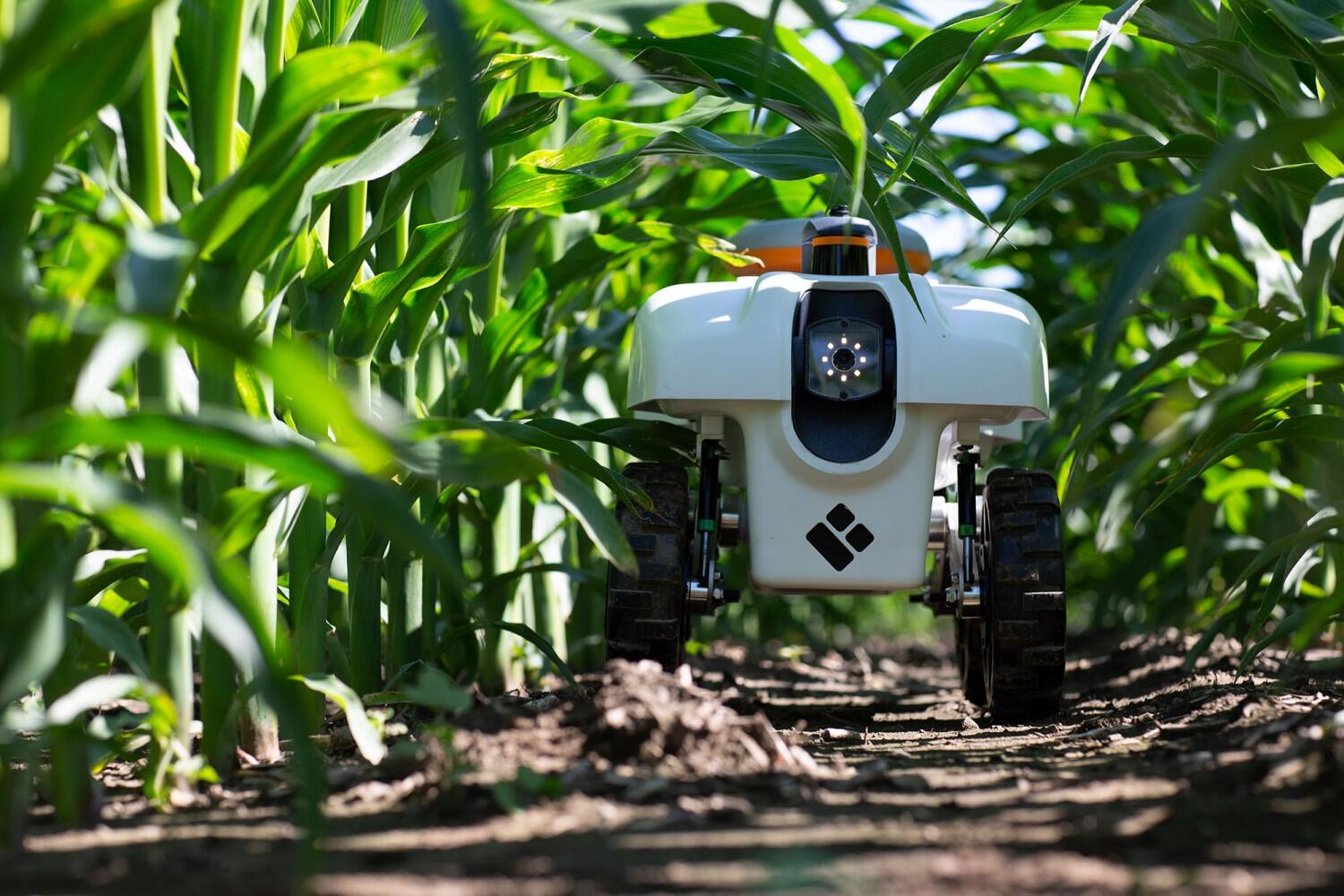TerraSentia robots, Agricultural and Biological Engineering faculty featured in New York Times

URBANA, Ill. – Professor of Agricultural and Biological Engineering (ABE) Girish Chowdhary and his research in field robotics continue to make headlines! A Feb. 13 article in the New York Times (NYT) features TerraSentia, a small, autonomous robot resulting from Chowdhary’s research at the University of Illinois.
Chowdhary’s work in field robotics is focused on addressing the labor crisis in agriculture. His group is developing novel robots and advanced AI for autonomous coordinated operation in agricultural fields. The NYT article covers the TerraSentia robot, which is designed to automate the labor-intensive process of collecting data to improve crop breeding. The robot automates the measurement of crop phenotypes such as plant height, stem diameter, leaf-area index, and plant count.
Chowdhary’s group and his collaborators at Illinois (Carl Bernacchi, Stephen Long, Donald Ort, and Justin McGrath) and at Cornell University have been working hard to develop and use this technology to improve the breeding pipeline. This work has been funded by the TERRA-MEPP project with support from the Advanced Research Projects Agency-Energy (ARPA-E) and the RIPE project with support from the Bill and Melinda Gates Foundation, the Foundation for Food and Agriculture Research (FFAR), and the UK Government’s Department for International Development (DFID).
“The idea is that robots can automate the phenotyping process and make these measurements more reliable,” Chowdhary says in the NYT article. He goes on to say that “[t]he data collected by the TerraSentia is changing breeding from a reactionary process into a more predictive one. Using the robot’s advanced machine-learning skills, scientists can collate the influence of hundreds, even thousands, of factors on a plant’s future traits, much like doctors utilize genetic tests to understand the likelihood of a patient developing breast cancer or Type 2 diabetes.”
Chowdhary and his collaborators’ work highlights the importance of interdisciplinary research in addressing grand challenges in agriculture.
Chowdhary has also been working with Adam Davis from Crop Sciences and Rayadurgam Srikant from Electrical and Computer Engineering to develop robust, deep learning-based systems for automated weeding. This work, funded by a joint NSF-USDA Cyber-Physical Systems project, is designed to address the growing challenges of herbicide resistance in commodity crops.
He is leading another project working with Girish Krishnan and Mattia Gazzola from the Grainger College of Engineering and Sarah Lowell, University of Missouri, for creating soft arms and manipulators to harvest berries and performing other management activities in specialty crops. This project is funded by a joint NSF-USDA National Robotics Initiative 2.0. The Center for Digital Agriculture has greatly enhanced these collaborations on the U of I campus.
Chowdhary’s work in AI and autonomy has also been funded by the U.S. Department of Defense, including a Young Investigator Award from AFOSR Computational Cognition and Machine Intelligence program, and a MURI from ONR Bio-Inspired Autonomous Systems program and the Science of Autonomy program, and DARPA.
The NYT article also mentions EarthSense, a company that Chowdhary co-founded for bringing these robotic solutions to growers. EarthSense is a recipient of the NSF SBIR award and is incubated in the EnterpriseWorks incubator at the U of I Research Park.
Chowdhary is an assistant professor in the Department of Agricultural and Biological Engineering, College of Agricultural, Consumer and Environmental Sciences. He also holds affiliate appointments in Computer Science, Electrical and Computer Engineering, and Aerospace Engineering in The Grainger College of Engineering, and he is a member of the Coordinated Science Lab at the U of I.
The NYT article goes on to detail the blossoming of small robots in agriculture, the niche that robots such as TerraSentia can fill, and the challenges that still lay ahead.
The article, “A Growing Presence on the Farm: Robots” is available online at https://www.nytimes.com/2020/02/13/science/farm-agriculture-robots.html